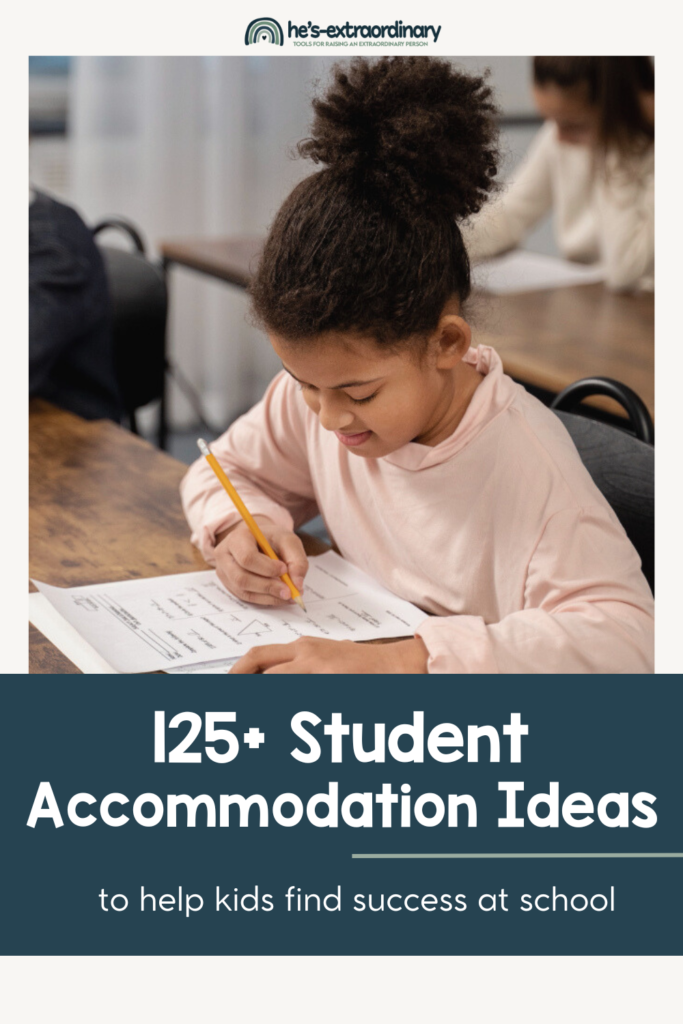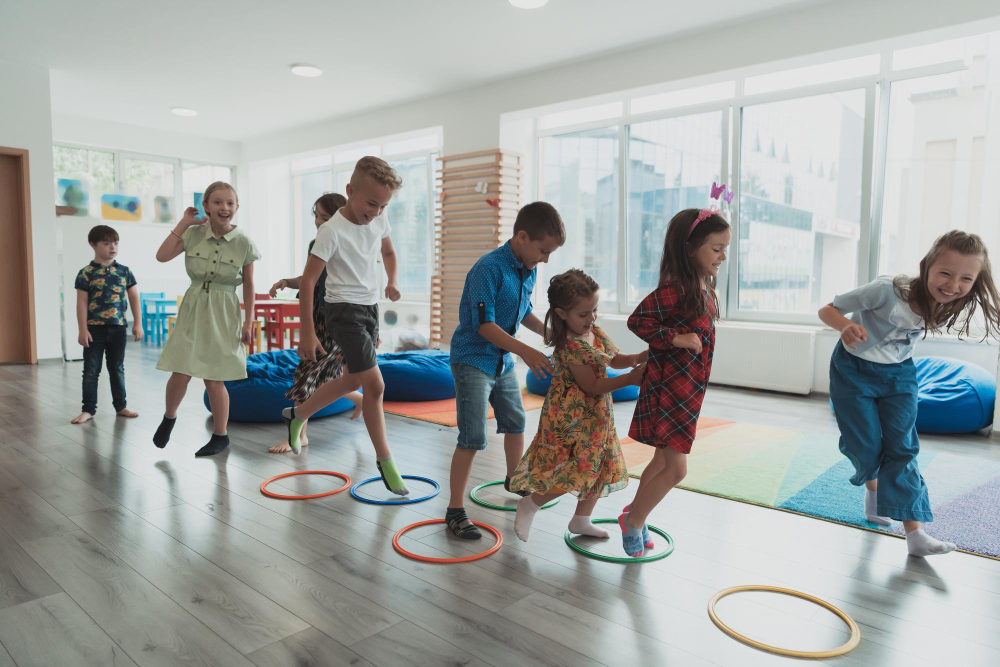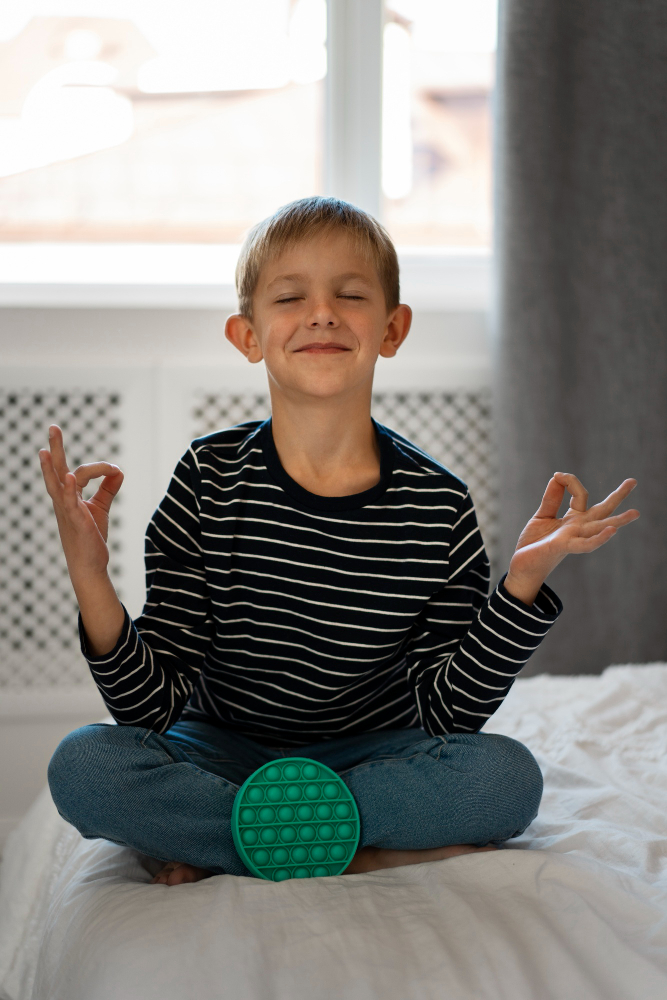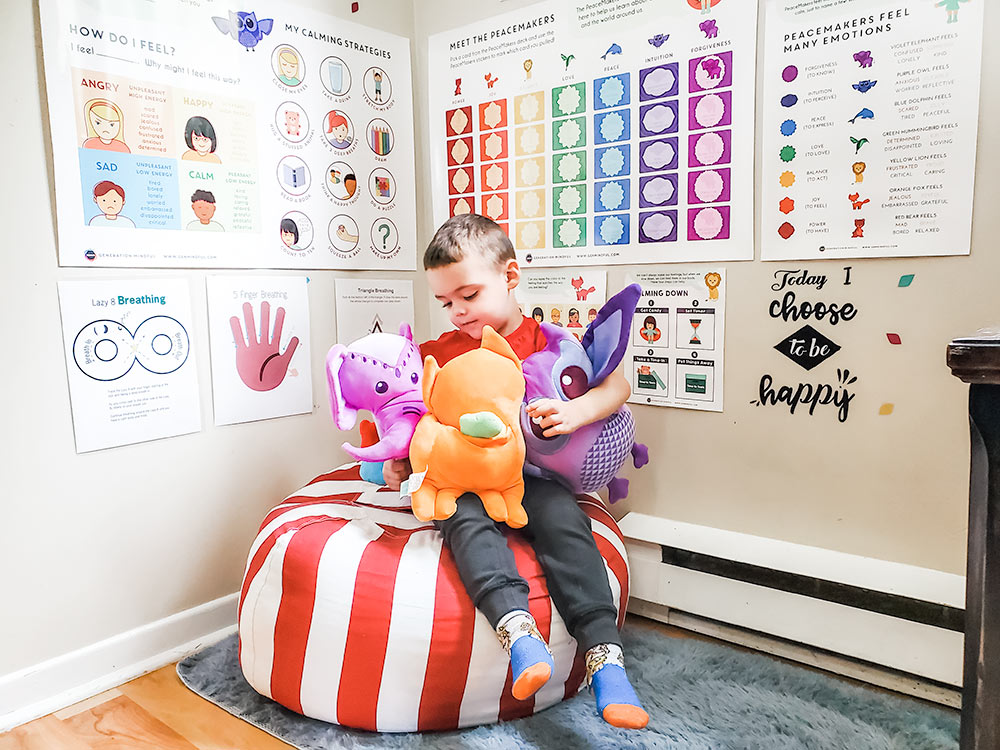125+ Student Accommodations – Ideas to Help Kids Succeed at School
What’s inside this article: Student accommodations and solutions to help improve some of the most common challenges faced by children at school. This guide aims to help children find more success at school.
Disclaimer: This post contains affiliate links.
Every child is different, with their unique strengths and challenges.
However, when those challenges make learning in a traditional classroom difficult, it can be disheartening for the student and for the parent and teacher trying to support them.
When a child is having a tough time in the classroom, making accommodations can really make a difference and help all kids succeed.
Maybe you’re a teacher looking for the right solution for your student. Or, maybe you’re a parent looking for ideas to share with your child’s teacher.
Regardless, use this post as a guide to finding possible solutions to students’ common challenges. You could even include helpful accommodations as part of your child’s 504 plan.
What Are Accommodations?
Student accommodations are simple changes or supports made in the classroom to help students with specific needs access learning more effectively.
These adjustments don’t lower the expectations or change what’s being taught, but they do offer different ways for students to engage with the material and show what they know.
Common student accommodations include giving extra time on a test, using assistive technology, or providing written instructions along with verbal ones.
Why Do Some Students Need Accommodations at School?
Not every student learns in the same way, and for some, the typical classroom setup does not align with their needs or learning style.
This might be due to developmental disabilities, learning disabilities, physical challenges, attention difficulties, sensory sensitivities, or other factors that affect how they process information or complete tasks.
Accommodations are essential because they help level the playing field, giving students the tools and support they need to fully participate in their education.
Student Accommodations Ideas for Common Challenges at School
Here’s a list of common challenges students might face and corresponding accommodation ideas for each:

If your child struggles with focus and attention:
- Provide short, frequent breaks during tasks.
- Use visual timers, like the time timer, to help manage time and stay on task.
- Offer a quiet workspace free from distractions.
- Break tasks into smaller, manageable steps with check-ins after each step.
- Incorporate movement breaks or allow fidget tools, like spinners or pop-its.
If your child struggles to sit still:
- Provide flexible seating options like wobble chairs, stability balls, or standing desks.
- Wiggle Feet– This is a silent fidget tool that children can use at school to release excess energy without disturbing the class.
- Incorporate planned movement breaks throughout the day to allow for physical activity. Occupational therapists often recommend 5-10 minutes of intense physical activity every 1-2 hours. For example:
- Chair push-ups: Get your child to hold on to either side of their chair and push with their arms to lift their bottoms off the seat. This provides proprioceptive input through heavy work, and it’s a tactic used by occupational therapists.
- 7-minute HIIT for kids
- Dinosaur workout for kids
- 8-minute workout for kids
- Use Sensory Diet cards to engage in 60 different sensory activities during breaks.
- Use fidget tools such as stress balls or fidget spinners to help manage restlessness.
- Allow for standing or pacing while working, especially during longer tasks.
- Break tasks into shorter segments with clear, achievable goals to help maintain focus.
- Use visual or auditory cues to signal when it’s time to focus and when movement is allowed.

If your child struggles with reading:
- Provide audiobooks or text-to-speech software.
- Use larger print or high-contrast text on worksheets.
- Allow extra time for reading assignments and tests.
- Use graphic organizers to help with comprehension.
- Pair written text with images or visual aids.
If your child struggles with writing:
- Allow typing on a computer or tablet instead of handwriting.
- Use speech-to-text software for writing assignments.
- Offer graphic organizers to help plan out writing tasks.
- Allow extra time for writing tasks and assignments.
- Provide written outlines or templates to guide writing.
- For creative writing – Kids often struggle getting started. Write the first sentence for them and have them take it from there, or provide 2-3 writing prompts and starting sentences for them to choose from.
If your child struggles with math:
- Use manipulatives like blocks or counters to visualize math problems.
- Provide step-by-step instructions and examples for solving problems.
- Allow the use of calculators for complex calculations.
- Break math problems into smaller steps with clear instructions.
- Offer additional practice time or tutoring sessions.
If your child struggles with social interactions:
- Teach and practice social skills through role-playing or social stories.
- Provide a buddy or peer mentor during group activities. Make sure you choose a buddy who is patient and empathetic and enjoys helping others. Pairing students up with a compatible match is the key to this strategy’s success. Sometimes, an older student paired with a younger one works well for this.
- Offer structured social opportunities with clear expectations, such as reading buddies, board game clubs, or managing a classroom garden collaboratively.
- Use visual supports like social scripts or cue cards.
- Encourage participation in partners or small groups rather than large groups.
- The right to pass – This is a great strategy to have classroom-wide. The right to pass means that any child you call on during class to answer a question or speak has the right to say “pass” if they’re uncomfortable speaking in front of others, with no shame or negative consequence. You can always check in with them in private later if it’s something you want to make sure they understand.

If your child struggles with sensory processing:
- If loud noises are triggering, allow students to use Noise Reducing Headphones or High-Fidelity Ear Plugs if they want something more discreet.
- Provide sensory breaks with access to a quiet, calming corner, or a sensory room.
- Offer alternative seating options like a wobble cushion or standing desk.
- Use sensory-friendly tools like fidget toys or weighted blankets.
- Modify the environment to reduce sensory overload – Read: How to Create a Sensory-Friendly Classroom.
- Provide resistance products like a body sock or weighted blankets or lap pads.
If your child struggles with organization:
- Use color-coded folders or notebooks for different subjects.
- Provide a visual schedule or planner to track assignments and deadlines.
- Offer checklists for completing tasks and assignments.
- Teach organizational skills through direct instruction and practice.
- Provide reminders or alarms for transitions and due dates.
If your child struggles with following directions:
- Give clear, concise instructions one step at a time.
- Use visual cues or written instructions to support verbal directions.
- Repeat instructions and check for understanding before starting tasks.
- Provide examples or models of completed tasks.
- Allow extra time for processing and responding to directions.
If your child struggles with anxiety or melts down easily:
- Create a predictable routine with clear expectations.
- Offer a quiet space, like a calming corner, to retreat to when feeling overwhelmed.
- Teach relaxation techniques like deep breathing or mindfulness.
- Use a worry box or journal to express and manage anxious thoughts.
- Use the step ladder approach to overcome specific anxieties and fears.
- Provide positive reinforcement and encouragement regularly.
- Learn more about preventing meltdowns. A proactive approach that prevents the behavior from escalating is more likely to be successful than attempting to de-escalate an already occurring meltdown.
- Learn more about non-violent crisis intervention and de-escalation strategies so that when those meltdowns do happen, you have the tools to respond to them.
- Teach and practice the Zones of Regulation.

If your child struggles with transitions:
- Use a timer like the time timer
- Use First- Then statements for small transitions. “First, (non-preferred), then, (preferred activity)”
- Provide advance notice before transitions or changes in routine.
- Use visual schedules to outline the daily plan.
- Incorporate transition rituals like a special song, countdown, or a gong.
- Allow extra time for transitions between activities.
- Offer choices to give the child a sense of control during transitions.
If your child struggles with executive functioning:
- Teach time management strategies using planners or apps.
- Break tasks into smaller, more manageable parts with clear deadlines.
- Use checklists and to-do lists to keep track of tasks.
- Provide step-by-step instructions and model how to complete tasks.
- Use visual organizers like mind maps or flowcharts.
- Establish clear expectations and consistent rules.
If your child struggles with verbal communication:
- Use picture exchange communication systems (PECS) or communication boards.
- Encourage the use of gestures or sign language to supplement speech.
- Allow extra time for the child to express themselves.
- Use simple, direct language when speaking to the child.
- Provide written or visual prompts to help with communication.
If your child struggles with memory:
- Provide written instructions or visual aids to support verbal directions.
- Offer frequent reviews and repetitions of key concepts.
- Use color-coding or highlighting to emphasize important information.
- Teach memory strategies such as chunking or making associations.
If your child struggles with emotional regulation:
- Teach and practice calming techniques like deep breathing or counting.
- Provide a quiet space or calming corner for the child to retreat to.
- Use visual supports like emotion charts or feel-o-meters.
- Incorporate regular breaks to help the child manage emotions.
- Offer positive reinforcement for using appropriate coping strategies.
- Use Social-Emotional Learning Programs like the Zones of Regulation.
- Use visuals and activities to help kids learn to understand and cope with their emotions.
- Psychoeducation – Teach kids about the fight or flight instinct.

If your child struggles with motivation:
- Incorporate the child’s interests into assignments or tasks.
- Set achievable, short-term goals with clear rewards.
- Offer choices in how to complete tasks to increase engagement.
- Use positive reinforcement and praise for effort, not just results.
If your child struggles with self-advocacy:
- Teach self-advocacy skills through role-playing or direct instruction.
- Encourage the child to ask for help when needed, and provide opportunities to do so.
- Model self-advocacy behavior and practice it in real-life situations.
- Provide sentence starters or scripts to help the child express their needs.
- Praise and reinforce self-advocacy efforts to build confidence.
If your child struggles with independence:
- Gradually increase the level of responsibility in tasks, starting with simple ones.
- Provide visual or written step-by-step instructions for completing tasks independently.
- Use a fading support model, gradually reducing adult assistance.
- Encourage problem-solving by asking guiding questions instead of giving answers.
- Reinforce independent efforts with praise or small rewards.
If your child struggles with fine motor skills:
- Provide larger writing tools like thick pencils, markers, or crayons.
- Use pencil grips or adaptive utensils to help with handwriting.
- Allow typing on a keyboard or using a tablet instead of handwriting.
- Offer alternative methods for assignments, such as oral reports or presentations.
- Provide hand-strengthening exercises and activities, such as using playdough or squeeze balls.
- Use slant boards to provide a better writing angle.
- Break tasks into smaller steps to reduce fatigue and frustration.
- Use No tie laces or bi-colored laces and this adorable little book for teaching them to tie their shoes independently.
- Do crafts and activities that encourage fine motor development, like diamond art.

If your child struggles with gross motor skills:
- Allow extra time for activities that require physical coordination, like PE or recess.
- Provide alternative seating options like stability balls or wobble cushions.
- Incorporate movement breaks throughout the day to help with coordination and balance.
- Modify physical activities to match the child’s abilities, such as adjusting the rules or equipment size.
- Provide occupational therapy tools like balance boards, or stepping stones.
- Use visual and verbal cues to help the child understand and follow instructions for physical tasks.
- Encourage participation in activities that promote gross motor development, like swimming, dancing, or yoga.
If your child struggles with skin picking or hair pulling:
- This toy called the “hairy tangle“ – a manipulative, hairy, fidget toy
- Offer a snap and click fidget toy – This one is literally my favorite and I play with my son’s all the time. The little click sound it makes when you fidget with it is oddly satisfying.
- This fidget kit which is a one-of-a-kind kit created specifically for children who pull out their hair or pick at their skin.
Additional Reading
Looking for more? Here’s some additional reading to help your children be successful at school.
- DON’TS of an Inclusive Classroom
- How to Build a Sensory-Friendly Classroom
- Play-Based Activities for Building Executive Functions
- Sensory Integration and Learning: Overcoming Challenges in the Classroom
- What is a 504 Plan and How Do You Get One?
Every child has the potential to succeed when given the right support and environment to thrive. By implementing the right student accommodations, you can help make the learning experience more accessible and enjoyable for every student.
Remember, student accommodations are not about lowering expectations—they’re about providing kids with the tools they need to meet those expectations.

